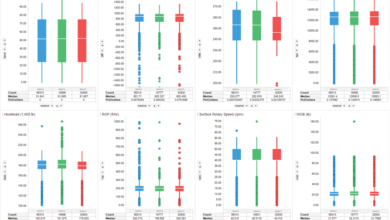HSET Corner: BHP Billiton reduces employee exposure to vapors from tanks through automatic tank gauging, enhanced respiratory program
By Kelli Ainsworth, Editorial Coordinator

According to a 2015 report from the US National Institute of Occupational Safety and Health (NIOSH), nine fatalities that occurred in the US oil and gas industry between 2010 and 2014 were linked to wellsite storage tanks. Four of these fatalities occurred while wellsite employees were performing tank gauging, while the other five were associated with truckers/pumpers taking fluid samples.
To address risks associated with these activities, BHP Billiton formed a task force in the Permian Basin in 2015 to study, analyze and make recommendations to limit employee exposure to hazardous vapors during tank gauging. “We took a process that was potentially fatal and embedded safety factors into it so we could take out the risk of fatality,” Allyson Faist, BHP Senior Health and Hygiene Specialist, said at the 2016 OSHA Oil and Gas Safety and Health Conference. The event was held on 29 November in Houston.
When thief hatches on the top of oil storage tanks are opened to measure the oil and water levels within, employees are exposed to hydrocarbons, and oxygen levels in the surrounding air decrease. “The hydrocarbon exposure could cause cardiac arrhythmia,” Ms Faist said, noting that all nine fatalities reported by NIOSH were related to cardiac episodes, regardless of age or the lack of a previous heart condition. “We also knew that there was dizziness when the tanks were opened.”
The low molecular hydrocarbons that are extracted from shale plays include more gas and other lighter components than hydrocarbons extracted in the past. This can increase the risks associated with inhaling tank vapors. “Low oxygen is going to increase your epinephrine. At the same time, these lower molecular hydrocarbons are going to do the same thing, leading to cardiac arrest,” Ms Faist said. “That’s why these guys in their 20s, who had no heart condition before, suddenly are dead.”
The BHP team first studied what the oxygen and lower explosive limit (LEL) levels – the lowest concentration of a gas or a vapor in air capable of producing a flash of fire in presence of an ignition source – were when a thief hatch was opened. They found that, when the hatch was opened, oxygen levels around the tank could be as low as 13.8%.OSHA considers oxygen levels below 19.5% to be oxygen deficient. At the same time, LEL levels were 100% when the hatch was opened and stayed high for more than seven minutes after opening. “Your operator is not going to outrun any vapors,” Ms Faist said.
Automatic tank gauging was analyzed as a potential solution for such risks. Various companies have developed or are researching methods to automatically measure tank volume, but a common method is via an electric sensor that measures the tank volume and sends the data to a computer, allowing the measurement to be obtained without exposing anyone to the tank’s vapors.
At BHP Billiton, the operator started by testing the accuracy of automatic tank gauging by using an indicator tape. Not only was the accuracy found to be sufficient, but automatic tank gauging also provided either continuous or on-demand measurements of the oil or water level in a tank for easy reference.
The operator now utilizes automatic tank gauging whenever possible, and this has led to a 98% reduction in the number of potential exposures to vapors from storage tanks in the Permian – from 15,000 to 260 potential exposures, according to Ms Faist.
The company has also implemented additional safety measures to protect employees in situations where the thief hatch must be opened. A respiratory program was put in place that requires employees to wear breathing apparatuses when hand gauging the tank. Because previously reported fatalities also occurred when the employee was performing the task alone, BHP further requires a buddy system for the task, Ms Faist said.
Since this initiative in the Permian, BHP Billiton has shared its findings and recommendations with API and the US Bureau of Land Management (BLM). The goal was to improve standards and government regulations related to tank gauging for the entire industry. Previously, standards and regulations called for either manual tank gauging, or the use of a lease automatic custody transfer device (LACT) to perform automatic measurement. However, LACTs can be cost prohibitive.
In mid-2016, API published a new standard, API MPMS Chapter 18.2, Custody Transfer of Crude Oil from Lease Tanks Using Alternative Measurement Methods, to provide additional options for tank gauging, including automatic tank gauging. In October, the BLM updated Onshore Orders 3, 4 and 5 to authorize automatic tank gauging using means other than a LACT. DC
Click here to view NIOSH’s report on inhalation fatalities related to manual tank gauging.




